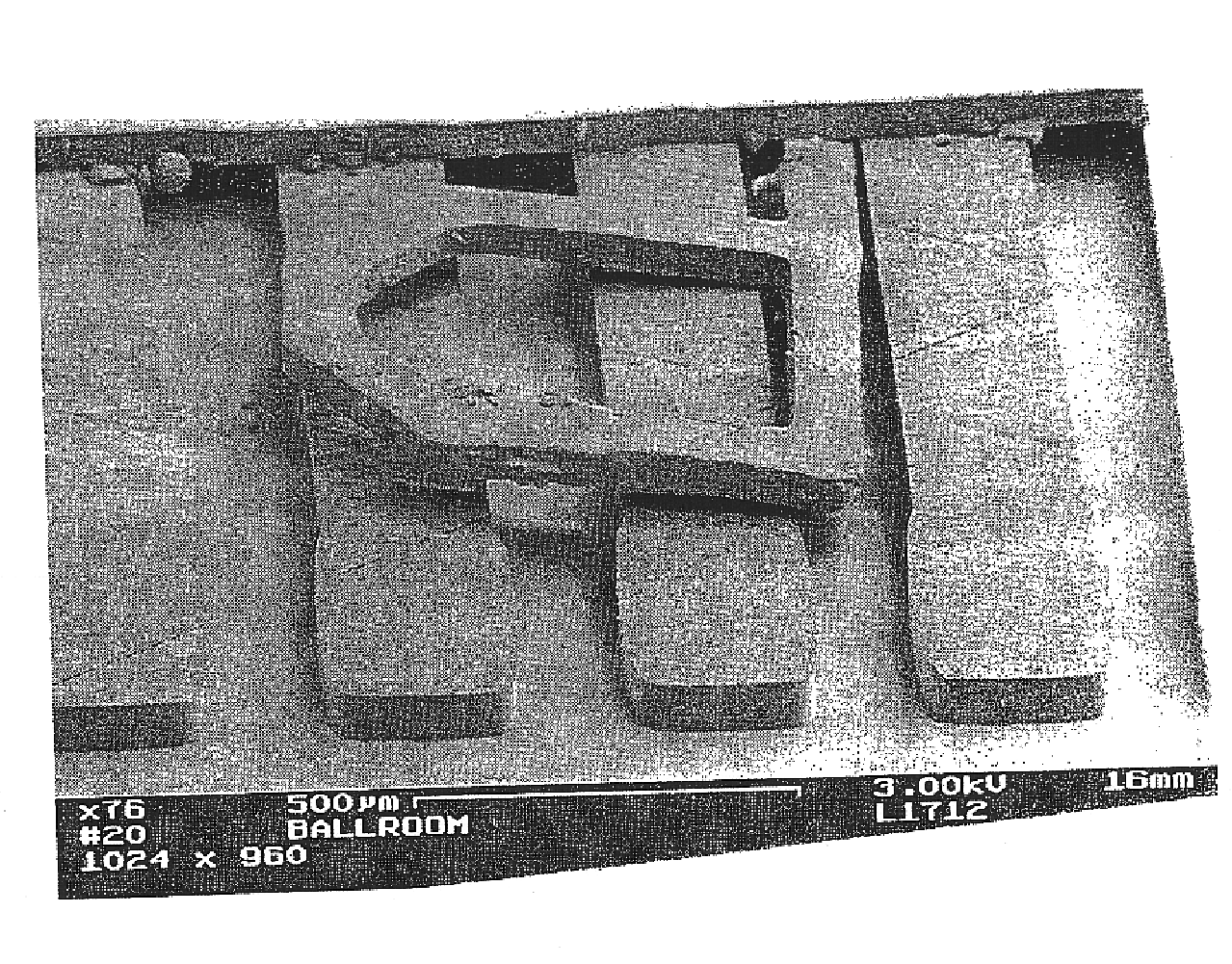Three dimensional microstructures and method of making
a microstructure and three-dimensional technology, applied in the field of three-dimensional microstructures and making methods, can solve the problems of other very complex devices that are not integrated circuits, drawbacks inherent in building such structures out of silicon materials, and hinder the wide adaptation of devices fabricated with such materials
- Summary
- Abstract
- Description
- Claims
- Application Information
AI Technical Summary
Benefits of technology
Problems solved by technology
Method used
Image
Examples
Embodiment Construction
A series of experiments were conducted to demonstrate the principles of the present invention. These experiments demonstrated the fabrication of free-standing micro components and fabrication of closed tunnels or conduits of essentially unlimited length / cross-sectional area ratio. The structures resulting from these experiments are shown the two electron micrographs, FIG. 1. A letter “P” was fabricated on a release layer, then captured with micro tools and moved so that its foot penetrated a conduit. The conduit is 150 microns wide, 50 microns tall, and 10,000 microns long.
The photolithographic processing of these devices was carried out using a commercially available photosensitive material and solvent system, specifically SU8-50C from Microchem Corporation of Newton, Mass. The “50” denotes viscosity, which ranges from 5 to 500 in Microchem's arbitrary labeling. The “C” represents an alternative solvent chosen for lower toxicity but which is also less polar than the standard solven...
PUM
| Property | Measurement | Unit |
|---|---|---|
| aspect ratios | aaaaa | aaaaa |
| thickness | aaaaa | aaaaa |
| electrostatic potential | aaaaa | aaaaa |
Abstract
Description
Claims
Application Information
 Login to View More
Login to View More - R&D
- Intellectual Property
- Life Sciences
- Materials
- Tech Scout
- Unparalleled Data Quality
- Higher Quality Content
- 60% Fewer Hallucinations
Browse by: Latest US Patents, China's latest patents, Technical Efficacy Thesaurus, Application Domain, Technology Topic, Popular Technical Reports.
© 2025 PatSnap. All rights reserved.Legal|Privacy policy|Modern Slavery Act Transparency Statement|Sitemap|About US| Contact US: help@patsnap.com

